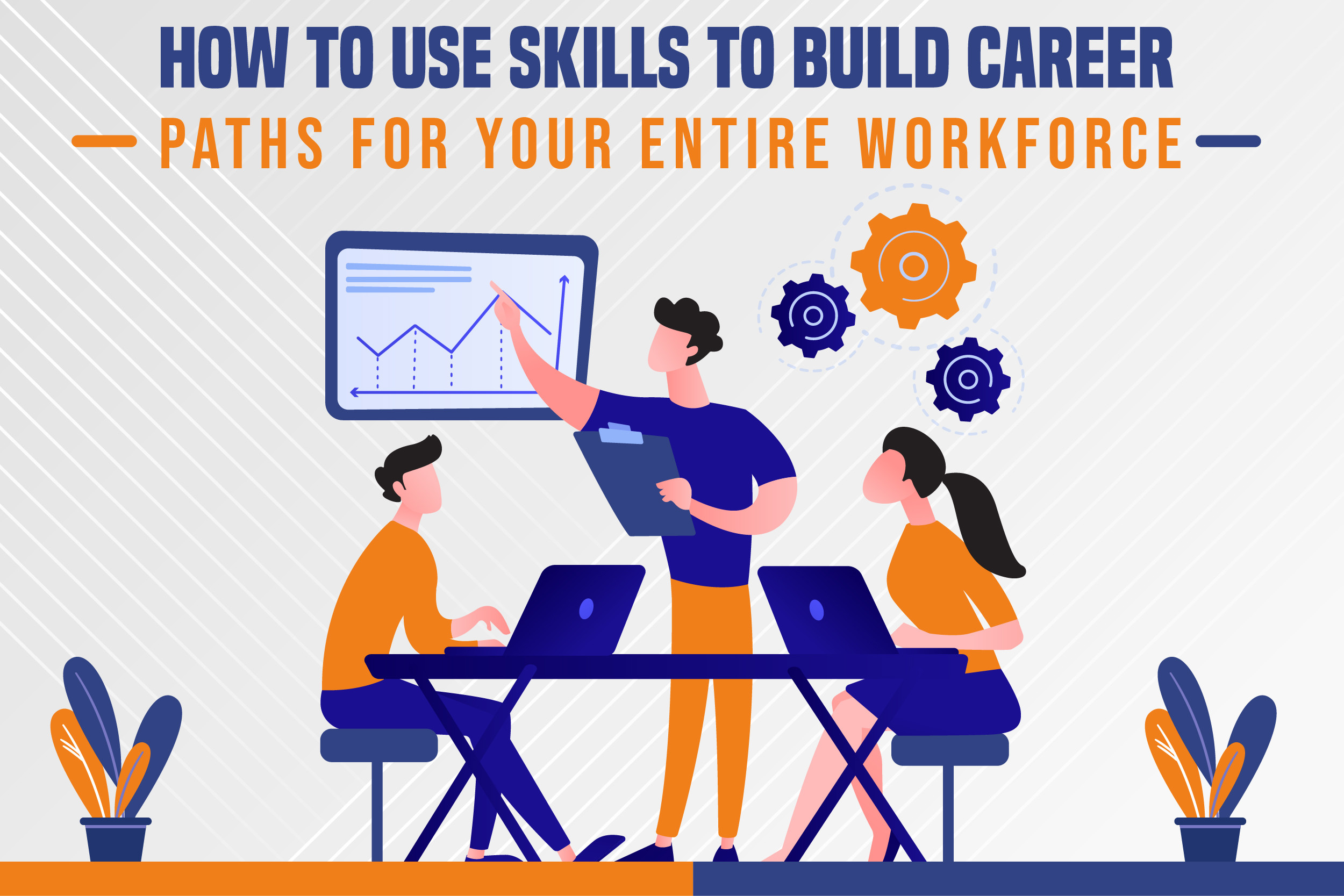
How To Use Skills To Build Career Paths For Your Entire Workforce?
Learning & Development raised the level of expectations of companies to a great extent. A LinkedIn poll involving 5154 professionals proved that. Moreover, even the entire objective of L&D is slowly shifting. L&D now involves coaching the entire business as opposed to simply the individual employee. By giving their staff the ability to tackle new obstacles, advance through an evolving landscape, and prosper, the present-day L&D professionals guide their businesses toward the future of work. L&D executives are reimagining the L&D process and implementing new technologies to do this.
The new L&D emphasizes data and skills than mere positions. One of the main goals of L&D is to develop a workforce that can change and adapt in order to address issues rather than merely fill roles. Keep reading for a quick primer on how to accomplish this new objective by utilizing data-driven, skills-based learning approaches to simultaneously develop career opportunities and the competencies your firm requires.
The Significance Of Skills To Build Career Paths For Your Employees
1. Skills Are The Backbone Of L&D
In a poll conducted, over three-quarters of Leadership and Management of companies said they needed to learn new skills to function well in volatile work environments. Respondents identified three advantages of skill development:
- Workers keep their company updated.
- Organizations are more adept at navigating transitions and disasters
- Employees transition into new positions.
The ability to customize skills-based learning is crucial. L&D professionals may assist employees in identifying and honing the abilities they require for both their overall career advancement and the difficulties the business will encounter rather than concentrating on what is required for a specific position.
2. What It Entails To Gain Skills-Based Learning
Every staff receives data-driven, targeted skills-based learning. For example, LinkedIn Learning leverages AI to find the talents that top professionals in your field have listed on their LinkedIn accounts, giving you a guideline to guide your skill-building plan.
You may concentrate on what your learners need rather than just what their responsibilities demand if you are aware of these abilities. Salespeople no longer need to take classes on "sales," for example; rather, they should learn about social selling, sales management, or CRM software.
3. Using Expertise To Direct Your Staff In The Appropriate Direction
Each of your workers will follow a distinct, personalized route after you have a clear understanding of the talents they require and enroll them in their best-suited Leadership Training Programs. Compare the employee's current talents to those of professionals who hold higher levels and/or similar tasks. After you have created a list of the skills necessary for each position inside your company, ask workers with the help of a poll, what they want and require from these skills. The poll can include the following questions:
- Which competencies do workers already possess?
- What are the skills that they are most eager to learn?
- Are there any abilities they should have but don't?
- Which skills must they develop in order to advance?
- Are your employees more engaged in leadership or careers as independent contributors?
Developing a career trajectory for each employee begins with responding to the above questions. Decide to train yourself in as many of the following areas:
- The employee lacks or does not possess a competitive level
- The worker is eager to learn new things.
- To attain goals, the employee must grow.
4. Matching Your Skill Plan To Organizational Objectives
You will have finished half of the first design process once you have responded to the questions above. You, as the Leadership and Management, must identify what your organization requires of your learners, and this is also the next stage.
Respond to the following inquiries:
- What are the objectives of your company?
- What is the strategic vision of your company?
- What competencies are required of your staff to achieve these objectives?
- What skills you need aren't presently available in your workforce?
The most important stage is putting everything together once you've examined the objectives and abilities needed to respond to this inquiry.
Match the talents you require to the ones your workers desire. You may "tune" these lists by aligning the talents you require with the desired skills of each worker.
After finishing, you'll have a framework for creating career and learning pathways where each individual learns both what they desire to study and what your business requires.
Future Goals: Fostering Lifelong Learning And Business Agility
Making these career choices is just the beginning. As an L&D specialist, you should continually track outcomes and performance and adjust your plans as necessary in light of your observations. The purpose of the skills-based approach to learning and development is to combine employee development with corporate growth. Your workers get the skills they need, and your business acquires a workforce equipped to meet tomorrow's problems.
In the end, skills-based learning enables the development of professionals who are nimble and continuous learners. You may inspire your workforce to grow whatsoever they need to be by training your employees on the importance of learning in the workplace.
